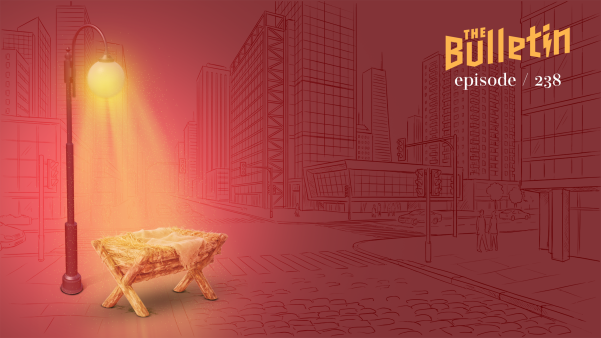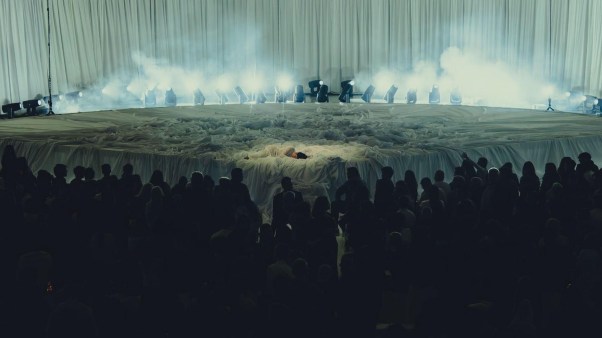The burial plot of Jesus is a mess. More accurately, the Church of the Holy Sepulchre in Jerusalem—marking what is thought to be the tomb Jesus occupied for three days—is a mess.
“The warring Christian monks make responsible maintenance of the sacred structure impossible,” wrote author and former Catholic priest James Carroll. “As a result, the roof beams rot, the walls crumble, the leaking gutters channel rainwater into the sanctuary instead of away.”
Carroll notes that turning the holy site into a fancy building, originally by order of Emperor Constantine and modeled after the imperial palace, was part of degrading the site, not preserving it. And, in Carroll’s thought, the old structure’s decay is still inevitable even if it really is the spot where Jesus was raised from the dead.
“That the Incarnation of Jesus Christ means He made His home in this particular thicket of turpitude,” Carroll continues, “does not mean that eventually the ancient basilica will be spared from final collapse.”
He’s right, up to a point. Jesus’ promise to build his church upon a rock such that “the gates of hell shall not prevail against it” (Matt. 16:18, ESV throughout) is not a promise that any particular congregation—much less any particular structure—will itself survive. In fact, the point is reinforced by the passage itself, which has divided the church over whether the “rock” is referring to Peter’s ongoing apostolic office.
Part of what Jesus communicates in his Patmos revelations to John is that churches are more fragile than we think. A church can lose its lampstand. A church can die. A church can hear the knocking on the door but refuse to have ears to hear. We need to be aware of this, Jesus said, if we are to “strengthen what remains and is about to die” (Rev. 3:2). But that’s not all Jesus told us.
A good number of us—seeing all the decadence and decline, infighting and carnality in whatever the evangelical church might now be—are all too aware of the fragility of the institutions and movements we love. In the face of that, maybe we need to be reminded that the church is also stronger than we think. And that leads me back to Revelation.
Many Christians—especially evangelicals who grew up with bizarrely speculative prophecy charts and end times theories—tend to love the first and last few chapters of Revelation but find the chapters in between confusing and disorienting.
For instance, John in his vision is told, “Measure the temple of God and the altar and those who worship there, but do not measure the court outside the temple; leave that out, for it is given over to the nations, and they will trample the holy city for forty-two months” (11:1–2).
Foggy passages like this, or those referencing “a time, and times, and half a time” (12:14), can come across as coded words meant for somebody else, perhaps the long-dead Christians who lived during the reign of a hostile emperor or future Christians at the precipice of final judgment. But Revelation specifically says it was written for the reader—for each of us—regardless of where we might be in time and space (1:3).
Remember that Jesus told us the temple was his body. It would be torn down, and he would raise it up again in three days (John 2:19). The temple is also where the dwelling place of God is, and the New Testament identifies that as the church, the living stones that make up God’s house, built on the cornerstone that is Christ himself (Eph. 2:20; 1 Pet. 2:5).
Why, then, is John told not to measure the outer court pictured before him in the vision? That outer edge, Jesus tells John, will indeed be beleaguered and besieged. But it is only the perimeter. What can be seen as destroyed and wrecked does not affect the Holy of Holies within, the altar at which sins are forgiven, through which peace is found with God.
The disaster in the outer court is for three and a half years—the perfect number of seven divided in half. In other words, the tumult is real, but it’s not unexpected and it will not last forever. The outer walls we can see before us are not, in fact, conquered. God has given them over to the nations, but just for a little while.
The church will sometimes make us grieve, but not as those who are without hope. Forty-two months seems like an eternity, but it’s not.That’s why we can still love the church.
We can work to keep it from being overtaken by marketers or politicians or scoundrels—to allow such would be to join the trampling nations in the outer court. And we can do that work of love without despair because the altar remains. The temple abides. The church is worth loving and fighting for.
When J. R. R. Tolkien’s son Michael was on the verge of losing his faith due to the nonsense and villainy he had seen in the church, Tolkien wrote in a letter to his son that, for him too, “the Church which once felt like a refuge, now often feels like a trap.” But Tolkien wondered if “this desperate feeling, the last state of loyalty hanging on,” was itself a blessing.
This, Tolkien wrote, gives us the moment “to exercise the virtue of loyalty, which indeed only becomes a virtue when one is under pressure to desert it.” The father thus advised his son to go to church—with people who annoy you, with an organization that may exasperate you.
The Church of the Holy Sepulchre is not what we would hope—from the structural disrepair to the tacky souvenirs that can be bought outside its doors. In time, the building will collapse. Maybe one day, it will be forgotten altogether.
What difference does this make? It’s not wise to speculate about what our experience might look like after the resolution of all things under the lordship of Christ. But maybe, just maybe, in the kingdom to come, one of us might wish to visit the former tomb of our Lord. We might ask, “Where on this transfigured map is the Church of the Holy Sepulchre?”
And perhaps Jesus will say to us, “Why seek the living among the dead? I’m right here, and I’ve been here all along.”
Structures are fragile. The resurrected Christ—and his church—is not.
Russell Moore is editor in chief at CT.














